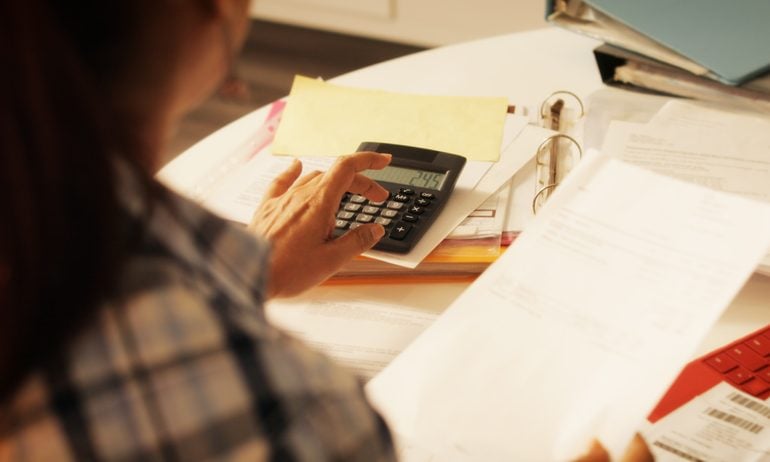IRS Payment Plan: How It Works, How to Apply

Many, or all, of the products featured on this page are from our advertising partners who compensate us when you take certain actions on our website or click to take an action on their website. However, this does not influence our evaluations. Our opinions are our own. Here is a list of our partners and here's how we make money.
You can apply for a payment plan online via the IRS' Payment Agreement tool.
The IRS offers short-term and long-term payment plans that allow taxpayers to pay their bill over time.
While interest and penalties still accrue on taxes unpaid after the tax deadline, the late-payment penalty is cut in half for those on a payment plan.
An unexpected tax bill is a surprise few people want to encounter. And when that balance turns out to be more than you can afford, it's easy to feel overwhelmed.
Thankfully, the IRS has tax payment plans that can help you tackle your bill over time.
What is an IRS payment plan?
An IRS payment plan is an agreement you make with the agency to pay your federal tax bill over time. You can set one up online, by phone or in person. The IRS offers short-term and long-term payment plan options.
Short-term payment plan
A short-term tax payment plan gives taxpayers the option to pay off their tax debt within 180 days.
Long-term payment plan
A long-term tax payment plan, also sometimes called an installment agreement, gives taxpayers who may need more than 180 days to settle their tax bill the option to pay off their tax debt in monthly installments for up to six years.
Which plan makes sense for you depends on how much you owe and how quickly you think you can pay your balance off. As long as you're keeping up with your plan, the agency usually won't issue a tax levy or a tax lien.
Who is eligible for an IRS installment agreement?
The IRS says most taxpayers qualify, and you can apply online for a short- or long-term plan via the IRS' Online Payment Agreement tool if you meet the following criteria for each plan:
Short-term payment plan eligibility: If you owe less than $100,000 in combined tax, penalties and interest, you’ve filed all your tax returns, and you can finish paying off your tax debt within 180 days, you are likely eligible for a short-term payment plan.
Long-term (installment plan) eligibility: If you owe $50,000 or less in combined tax, penalties and interest, you’ve filed all your tax returns, and you need more than 180 days to pay your tax bill, you may be eligible for a long-term payment plan.
If the tool determines that you're ineligible to set up a plan online, the IRS says you may still be able to apply by mail or by phone (more on that below).
How to set up a payment plan with the IRS
If you qualify for a payment plan, the fastest way to apply is online, through the IRS' application portal, but there are also paper and phone options as wel.
Applying for an IRS payment plan online
If you’ve previously registered for an online IRS account to get a tax transcript or an identity protection PIN, you can log into the IRS' Online Payment Agreement tool with the same user ID and password. If not, you’ll need to create an ID.me account to confirm your identity, which means having the following information on hand:
A valid email address and access to your email.
Photo identification (driver's license, state ID, passport).
Your Social Security number or individual tax ID number.
Access to a smartphone or webcam to verify your identity.
Access to a phone or email for multi-factor authentication.
If you need assistance with verifying your information or require accessibility help, visit the ID.me help page for more information.
Applying for an IRS payment plan by phone or mail
Another way to apply for a payment plan is to file Form 9465 with the agency. Alternatively, you can also call the IRS' main phone line (800-829-1040) to set up a new plan or revise an existing one. The number for business payment plans is different: 800-829-4933.
Does the IRS charge interest on payment plans?
Yes. Getting on an IRS payment plan doesn’t get you out of interest and penalties for late payment; those accrue until your balance is zero. However, per the IRS, the failure-to-pay penalty is cut in half when on a payment plan. This means you'd have a .25% late-payment penalty tacked onto your bill, rather than a .5% penalty.
Don't put off filing your return because of a tax bill, the IRS says. Doing so could result in late-filing fees for each month or part of the month your return is late. Instead, consider filing your return, paying what you can, and looking into an IRS payment plan or other tax debt relief options.
How to calculate your monthly payment
In general, if you have a long-term payment plan, you can choose how much you pay every month. That is, the IRS will ask you what you can afford. However, you must choose a payment amount that will pay off your debt within 72 months. To get a rough estimate of what you can expect to pay per month, divide what you owe by 72.
What are the fees for an IRS payment plan?
The cost of an IRS payment plan depends on which plan you choose, how you apply for the plan, and whether you qualify for a fee reduction.
If you’re a low-income taxpayer, the IRS waives the user fee if you agree to let it make automatic withdrawals from your bank account for the payments. If you qualify as a low-income taxpayer but are unable to make electronic debit payments, the IRS will reimburse you for the user fee when you pay off your balance.
Generally, to qualify as a low-income applicant your adjusted gross income is at or below 250% of the federal poverty level. (See if you qualify on IRS Form 13844.)
Payment plan type | Maximum you can owe to qualify | Setup fee & payment methods |
|---|---|---|
Short-term payment plan (180 days or less) | $100,000 in combined tax, penalties and interest. | $0 to apply online, by phone, by mail or in person. Pay balance by:
|
Long-term payment plan (more than 180 days) | $50,000 in combined tax, penalties and interest. | If you pay through automatic debit withdrawals:
If you pay by another method (e.g., Direct Pay, EFTPS or money order):
|
A few other fee-related details to note
If you make your payments with a debit or credit card, you’ll have to pay a processing fee. The charge for debit cards runs $2 and some change per payment; the charge for credit cards can be nearly 2% of the payment.
If you owe more than $25,000, you have to make your payments via automatic withdrawals from a bank account (“direct debit”).
How do I make changes to an IRS installment agreement?
The IRS' payment agreement tool lets you change your monthly payment amount, change the monthly due date, sign up for automatic withdrawals and reinstate a payment plan you’ve fallen behind on.
If your new monthly plan does not meet IRS requirements, you may need to adjust the payment amount.
If you can't afford the monthly payment amount, you may need to fill out Form 9465 and Form 433-F (collection information statement).
Can I apply for an IRS payment plan myself?
Yes. You are not required to pay a third party to apply for a payment plan.
If you do hire a tax-relief company to help you settle your debt, you may have to give it power of attorney to apply for an IRS payment plan on your behalf. Proceed with caution and do your research, as the Federal Trade Commission warns on its website:
“The truth is that most taxpayers are unlikely to qualify for the programs these scammers advertise. In many cases, these companies don't settle your tax debt. Some don't even send your paperwork to the IRS to apply for programs to help you. These companies often leave people even further in debt.”




